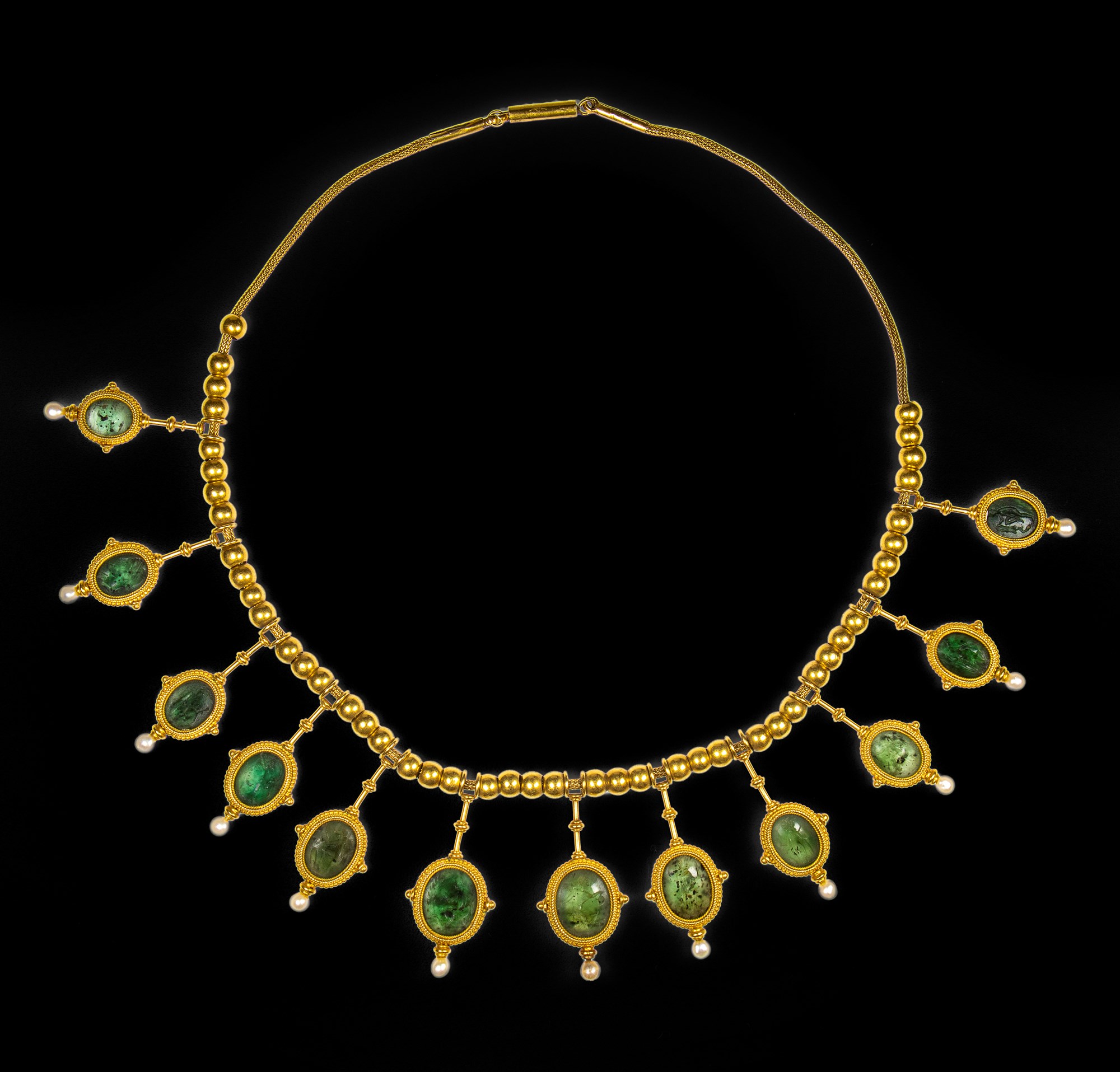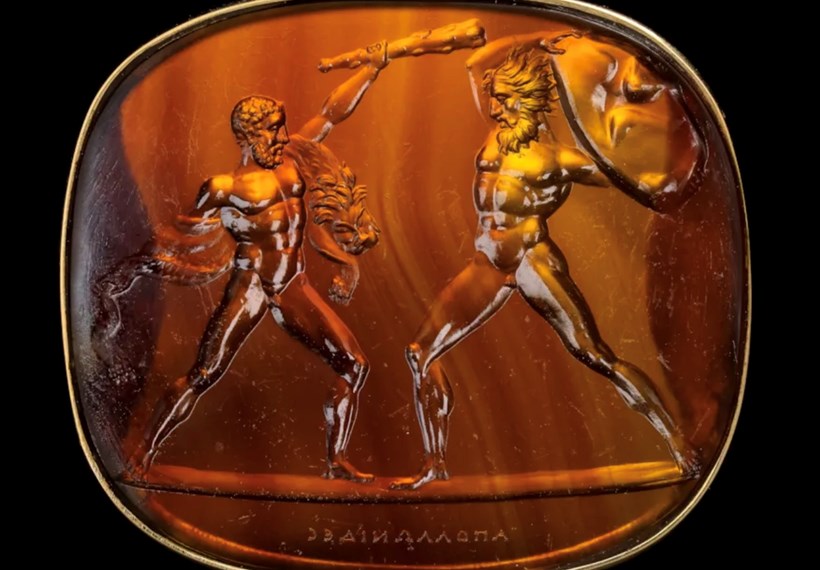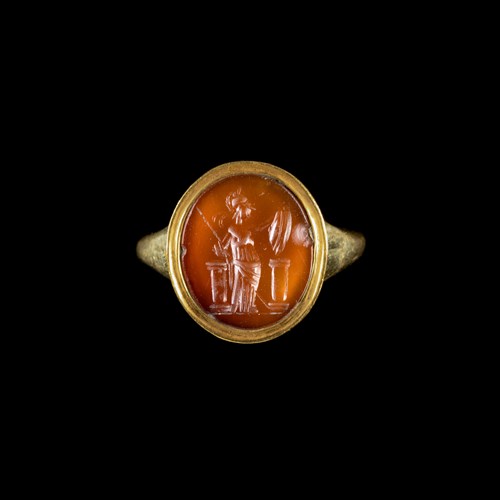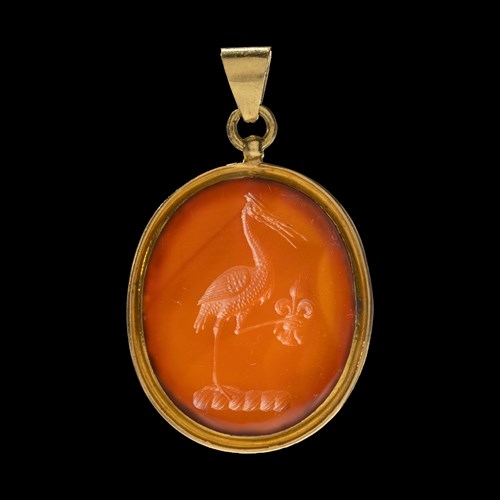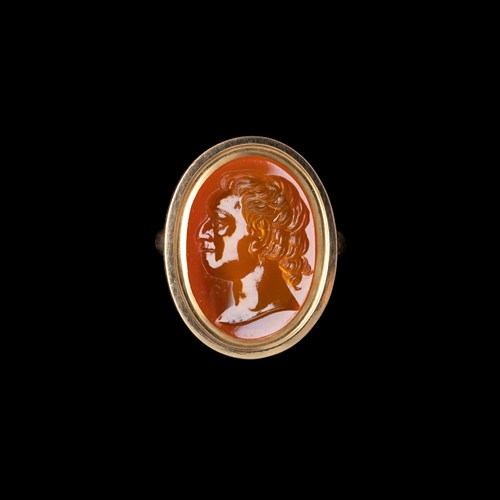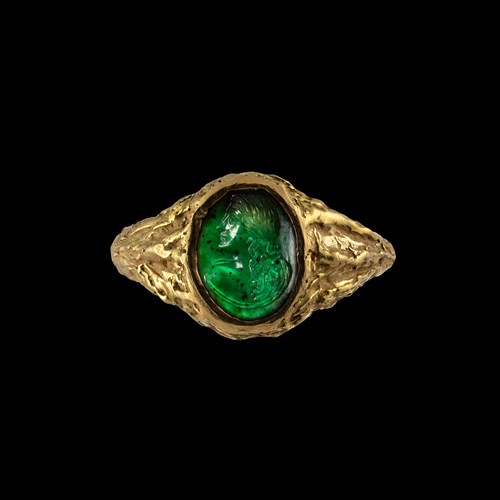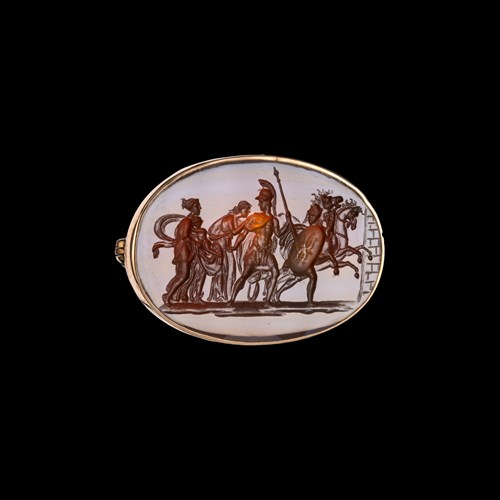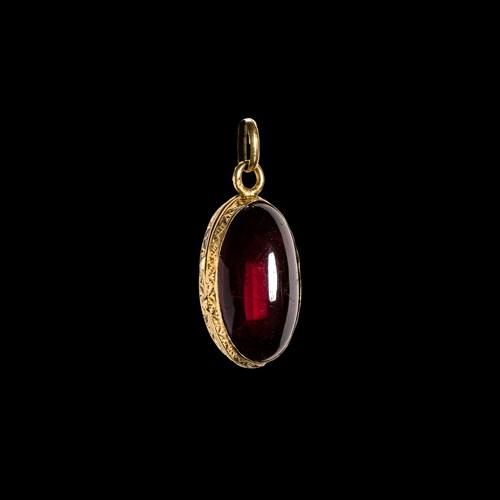Marketplace
Necklace, Giacinto Melillo, c.1870
Necklace, Giacinto Melillo, c.1870
Origin London, consignment
Medium gold, prasium
Dimension 40 cm (15³/₄ inches)
This precious necklace features a series of gold elements assembled on a broad braided gold chain. Twelve oval box-settings, crafted with granulation, twisted wires, and small pearls at their bases, each enclose a Roman green chalcedony intaglio. These intaglios, separated by clusters of four gold beads, depict scenes such as a goat and tree, a male bust, a young faunus with a double flute, a Gryllos, a warrior, a satyr, an erote with a panther, a draped offerer, Venus Victrix, Nike, Fortuna Tyche, and Venus with marine attributes.
An outstanding example of 19th-century Archaeological Revival jewelry, this necklace masterfully combines ancient Roman gems with modern craftsmanship. It closely relates to the famed Castellani necklace housed in the Museo Nazionale Etrusco di Villa Giulia, Rome (inv. 85013).
Giacinto Melillo (1846–1915), whose career began under Alessandro Castellani’s guidance in Naples, played a pivotal role in this tradition. By 1870, Melillo had assumed ownership of the Naples workshop, producing refined pieces that often surpassed the work of Casa Castellani in Rome. Celebrated collector Count Michel Tyskiewicz praised Melillo’s extraordinary craftsmanship in 1896, contrasting it with the coarser jewelry of the period.
For further reference, see:
Geoffrey Munn, "Giacinto Melillo: a pupil of Castellani", The Connoisseur, vol. 196 (1977), pp. 20–22.
Geoffrey Munn, Les bijoutiers Castellani et Giuliano. Retour à l’antique au XIXe siècle, Fribourg, 1983.
An outstanding example of 19th-century Archaeological Revival jewelry, this necklace masterfully combines ancient Roman gems with modern craftsmanship. It closely relates to the famed Castellani necklace housed in the Museo Nazionale Etrusco di Villa Giulia, Rome (inv. 85013).
Giacinto Melillo (1846–1915), whose career began under Alessandro Castellani’s guidance in Naples, played a pivotal role in this tradition. By 1870, Melillo had assumed ownership of the Naples workshop, producing refined pieces that often surpassed the work of Casa Castellani in Rome. Celebrated collector Count Michel Tyskiewicz praised Melillo’s extraordinary craftsmanship in 1896, contrasting it with the coarser jewelry of the period.
For further reference, see:
Geoffrey Munn, "Giacinto Melillo: a pupil of Castellani", The Connoisseur, vol. 196 (1977), pp. 20–22.
Geoffrey Munn, Les bijoutiers Castellani et Giuliano. Retour à l’antique au XIXe siècle, Fribourg, 1983.
Origin: London, consignment
Medium: gold, prasium
Dimension: 40 cm (15³/₄ inches)
More artworks from the Gallery


